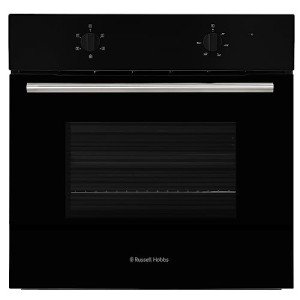RoystonLuigi
RoystonLuigi发表的博客
The Ultimate Guide to Single Ovens: Features, Benefits, and FAQs
When it pertains to modern kitchen appliances, the single oven stands apart as a flexible and essential tool for any cooking lover. In today's busy world, where benefit satisfies culinary workmanship, single ovens play a pivotal function in meal preparation. Comprehending the functions, advantages, and kinds of single ovens can streamline the process of selecting the ideal appliance for your kitchen. This comprehensive guide aims to offer an extensive appearance at single ovens, their requirements, and responses to regularly asked questions.
What is a Single Oven?
A single oven is a kitchen appliance that features one primary cooking compartment. It What Is A Single Oven created to perform different cooking functions such as baking, roasting, broiling, and more. Unlike double ovens, that include two separate cavities, single ovens maximize area effectiveness, making them appropriate for smaller sized cooking areas or those who regularly prepare meals for a couple of people.
The Anatomy of a Single Oven
In order to appreciate the functionality of a single oven, comprehending its crucial components is important:
| Component | Description |
|---|---|
| Cooking Cavity | Main area where food is positioned for cooking. |
| Control Panel | User interface for choosing cooking modes and adjusting temperature. |
| Heating Elements | Metal coils that produce heat (often found at the top and bottom). |
| Oven Door | Glass panel that enables exposure into the cooking space. |
| Racks | Detachable shelves that accommodate different dishes at various heights. |
Types of Single Ovens
Single ovens can be found in numerous types based upon their heating techniques and designs. Here are some popular alternatives:
Conventional Ovens: Utilize gas or electrical power for a conventional cooking experience. They supply consistent heat for baking and roasting.
Convection Ovens: Equipped with a fan that circulates hot air, resulting in much faster cooking times and even heat distribution.
Steam Ovens: Use steam to prepare food, maintaining moisture and nutrients. Perfect for much healthier cooking methods.
Wall Ovens: Built into the wall to save area; they can improve kitchen looks while supplying functionality.
Microwave Ovens: While not a conventional oven, modern-day microwave can also bake and roast, providing benefit for quick meal preparation.
Features to Look for in a Single Oven
When buying a single oven, think about the following functions to guarantee you select an appliance that fits your cooking needs:
Capacity: Ensure the oven's size accommodates your typical cooking volume. Standard capabilities typically range from 4.5 to 6 cubic feet.
Temperature level Range: Look for an oven that supplies a large temperature level range for various cooking methods.
Self-Cleaning Options: Self-cleaning modes bypass the need for severe chemicals, making maintenance much easier.
Smart Technology: Wi-Fi-enabled designs enable remote operation and monitoring through smart device applications.
Interior Lighting: Bright, incandescent or LED lighting assists monitor your food without unlocking.
Average Sizes and Capacities of Single Ovens
| Type | Average Capacity (cubic feet) | Width (inches) | Height (inches) |
|---|---|---|---|
| Standard Conventional | 5.0 - 6.0 | 30 | 28 - 30 |
| Compact/Apartment Size | 3.0 - 4.0 | 24 | 28 - 30 |
| Wall Oven | 4.5 - 5.0 | 24 - 30 | 28 - 30 |
Benefits of Using a Single Oven
Purchasing a single oven uses numerous advantages for both amateur cooks and seasoned chefs alike:
Space Efficiency: A single oven inhabits less space than a double oven, making it best for smaller kitchen areas.
Economical: Generally less costly compared to double ovens, both in preliminary purchase and energy usage.
Versatility: Capable of carrying out different cooking strategies, making it ideal for a variety of dishes.
Alleviate of Use: With a smaller cooking area, heat circulation tends to be more efficient, simplifying the cooking procedure.
Maintenance: Fewer parts mean less intricacy when it concerns cleansing and repair work.
Often Asked Questions (FAQs)
What is the typical life expectancy of a single oven?
A single oven usually lasts between 10 to 15 years, depending upon use, upkeep, and the quality of the appliance.
How can a single oven save energy?
Single ovens need less power than double ovens, and numerous models are developed with energy efficiency in mind, lowering overall energy usage.
Can a convection oven change a basic oven?
Yes, a stove can change a standard oven as it provides similar cooking functions along with faster cooking times.
Are single ovens ideal for large households?
While single ovens can accommodate a good quantity of food, bigger households might find that a double oven or an extra single oven fits their requirements more effectively.
How often should I clean my single oven?
It is advised to clean your oven every 3 to six months, depending upon use, to maintain health and efficiency, particularly with models that include self-cleaning alternatives.
Is installation challenging for a single oven?
Most single ovens included uncomplicated installation directions. Nevertheless, seeking advice from an expert is recommended for safe and right setup, particularly for gas ovens.
The single oven remains a cornerstone home appliance in kitchen areas around the globe. Its flexibility, performance, and space-saving design make it an attractive option for many families. Whether you are a periodic cook or a cooking connoisseur, picking the right single oven can substantially enhance your cooking experience. With the details shared in this guide, potential buyers can make a notified decision, ensuring they pick an oven that best fits their cooking requirements and way of life.

